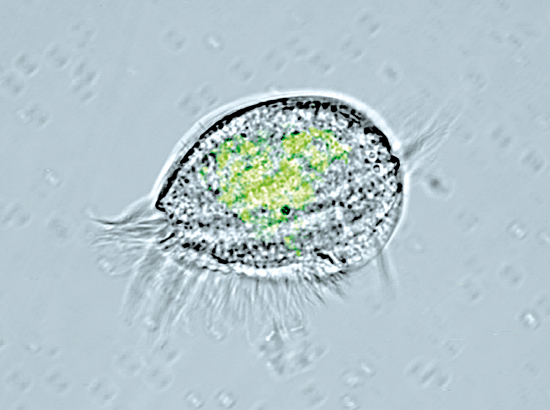748
 |
| Single celled organism Image source: |
Early life on Earth consisted of single-celled organisms that reproduced by dividing into half or what is formally known as asexual reproduction. As life evolved and more complex and multi-cellular organisms were created, two sexes became distinguished- the male and the female, which were both required in the process of sexual reproduction. It is believed that nature promotes sexual reproduction since it provides an opportunity of recombination of genetic material in a given population.
There is evidence for sexual production in plants as well and distinct male and female plants do exist. Usually a female produces an egg which is then fertilized by a male gamete to give rise to an embryo, which grows into an adult organism. So, when we were busy considering ‘Dioecy’ (species have distinct male and female organisms) as one proof of our evolution, scientists have found that certain females can reproduce without the need of a male. Offspring produced in such a manner are often females and the species continues through this process called ‘parthenogenesis’ or a virgin birth.
Parthenogenesis is a process whereby an unfertilized egg gives rise to a new organism. The female egg generally develops through a process of meiosis where the genetic material is halved during the division, but in parthenogenesis this does not happen. The offspring is produced from an egg that does not divide and so is a clone of the mother. Another possibility is that two unfertilized eggs fuse together after meiosis to give rise to an embryo in this process.
 |
| Image Source: www.thewaspman.com |
Parthenogenesis can be a useful process if the female is well adapted to survive in her environment. In fact, some species use parthenogenesis for reproduction when the male of the species are not around, reverting back to sexual reproduction when they do find a mate. Some of the species known to exhibit parthenogenesis include the New Mexico Whiptail, which is a species of lizard with only the female sex. It is believed that the Whiptail is a hybrid between two other species, after which the males became infertile making this an ‘all female’ species that reproduces solely by parthenogenesis.
There is recent evidence that Komodo dragons that inhabit zoos lay eggs that give rise to healthy adults without coming in contact with a male of their species. Researchers studying these species believe that the Komodo dragons are able to exhibit parthenogenesis in captivity but would reproduce normally in the wild. Other species include the Boa constrictor, the Bonnethead Shark and Marbled Crayfish that are also able to exhibit parthenogenesis when the male is not around, reverting back to sexual reproduction when possible.
The Bdelloidea class of rotifers, that inhabit fresh water and moist soil, have reproduced asexually for 80 million years and still show great diversity with about 300 known species. They do so by a peculiar mechanism of eating up free DNA in their environment and incorporating it into their genome. So, who is evolved now?

